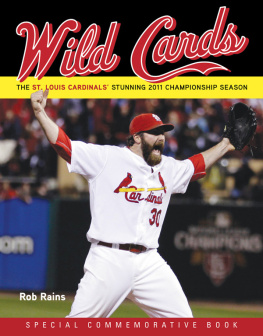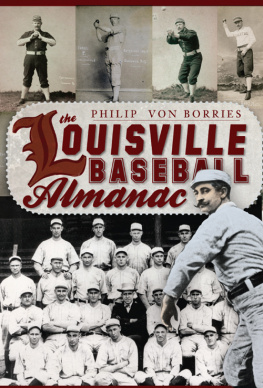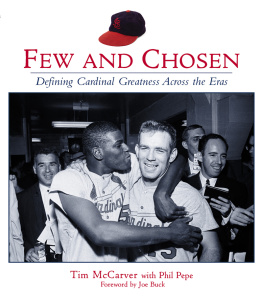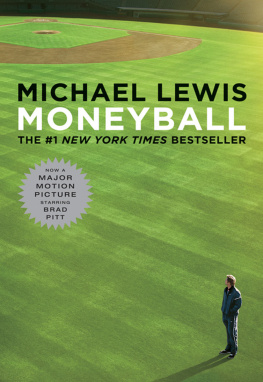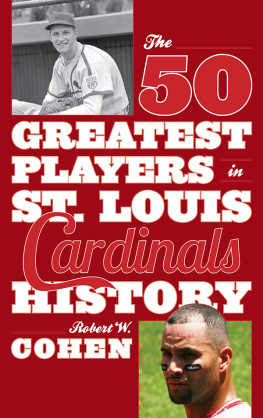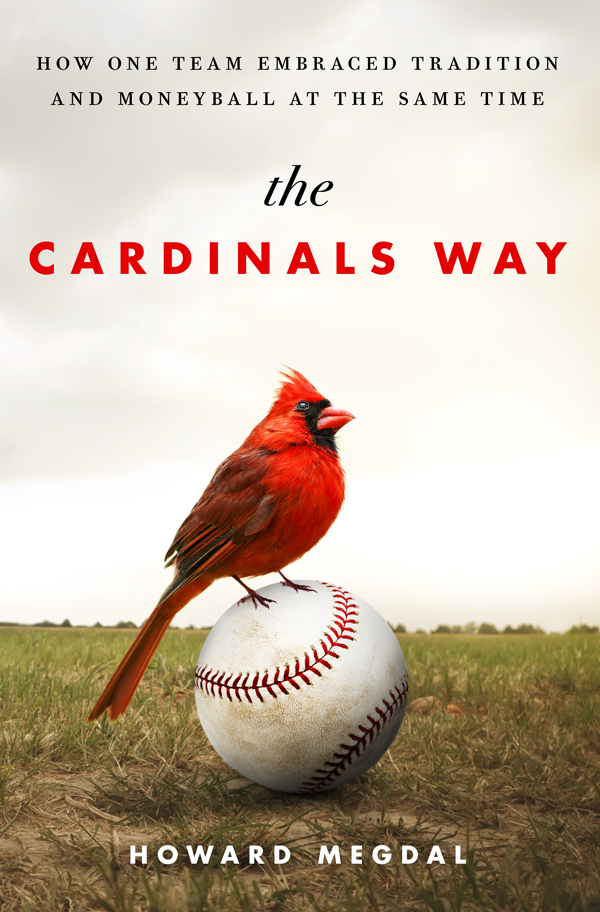Contents
Guide

The author and publisher have provided this e-book to you for your personal use only. You may not make this e-book publicly available in any way. Copyright infringement is against the law. If you believe the copy of this e-book you are reading infringes on the authors copyright, please notify the publisher at: us.macmillanusa.com/piracy.
Please note that some of the links referenced in this work are no longer active.
To Rachel, the Branch Rickey of wives, and Mirabelle and Juliet, my favorite prospects with limitless ceilings
For years everyone had been telling Mike Matheny how great the Cardinals were, and in April 2014, sitting in the visiting managers office at Great American Ball Park in Cincinnati, Matheny finally had enough. It was Matheny at peak Midwestern modesty.
If somebody told you Mike Matheny was the newest star in Hollywood, youd buy it. But really, he belongs to a different Hollywood era physically and in manner, with intense blue eyes and the countenance of the guy youd bet your money on in a western blockbusters climactic gunfight.
He looks like a manager. He sounds like a manager. And when Cardinals general manager John Mozeliak started looking for the person to continue the franchises success after the 2011 World Series championship, Mathenys presence and ties to the organization made him the easy choice. His game-management skills are oft discussed and still developing. His relationships with people are why he has the job.
With reporters, Matheny answers the questions he wants to answer. And he doesnt dodge others: he flat out tells you he doesnt wish to respond.
But it would be a mistake to think his focus implies he has taciturn interactions with his players. Nearly every Cardinal has a story about a conversation with Matheny at a key time in his career, almost always initiated by the skipper. Still just forty-three as the 2014 season began, Mathenys ability to come in and succeed Tony La Russa, a legendary manager, isnt talked about often, largely because of how seamlessly it happened.
Matheny took over in 2012 and led the Cardinals to the NLCS. In 2013, his Cardinals won the pennant before falling to the Boston Red Sox in the World Series. In 2014, they returned to the postseason, and lost in the NLCS once again. And as this book went to press in August 2015, the Cardinals were on a pace to win well over 100 games, with a Tom Verducci story about them in Sports Illustrated using both beast and superteam in the headline.
Coming on the heels of Tony La Russas 2011 World Series championship in his final season, the Cardinals have put together the kind of sustained success that is rare in baseball, drawing all kinds of attention and a simple question.
How are they doing it?
Accordingly, thered been a great deal of talk about the Cardinals Way. It had come to represent many different things in the public eye and media discussions: a code of conduct, a particular outlook on baseball, a moral compass. It had been co-opted, used as shorthand, and Matheny was sick of all the praise.
I dont even want to use the Cardinals Way term anymore, Matheny said. But that whole idea is really something to be inside this clubhouse and inside more importantly the minor league clubhouse. About what its supposed to look like and not really for commercialization or for promotion.
I think it got out of hand to the point where its ugly to people outside of this organization. No good comes from it. And I think its put people on the offensive. And they have all the reason in the world [to want to beat the Cardinals]. You know, its like were out there running, carrying this big banner, and thats not necessarilynot at allwho we are.
You can understand where Mathenys coming from. After all, who needs teams more motivated to play you? Other fans around baseball took similar exception to the consistent refrain about Cardinals fans being the best fans in baseball, as if the way the Cardinals (and many, many other teams) choose to thank their fans for support had turned into a boast by those very fans.
A Twitter account even sprung up, @BestFansStLouis, highlighting awful things Cardinals fans would say on Twitter. What this proved, I couldnt tell you. Finding disgusting sentiments on the cesspool that is Twitter doesnt take long. And best fans in baseball is a fundamentally different concept from perfect fanbase, purged of anything petty or nasty. In my experience, Cardinals fans do boo less and are more gracious when an opposing player makes a great play. They show up more, and more consistently. Their local television ratings in 2014 were the highest of any MLB team.
But this isnt a group of fans trying to maintain modestythis is a key member of the Cardinals, trying to avoid entirely deserved praise. Lets take a step back and think about that. The Cardinals largely avoid publicizing the Cardinals Way as an idea, large or small. The name itself comes from a manual, written originally by George Kissell, a coach whom the Cardinals employed from 1940 until his death in 2008. Kissell was signed by Branch Rickey, meaning that the teams minor league player-development staff is either directly trained by a man Rickey hired or works from a manual created by that man. This is how directly the Cardinals connect to the creation of the farm system itself.
That isnt new, though. The attention to the Cardinals Way in recent years stems from the Cardinals winning. The Cardinals made the postseason and advanced at least one round each season between 2011 and 2014. Notably, this was the first time the Cardinals had made the postseason four consecutive years.
And the Cardinals were not just winning but doing so while seeming to have a bottomless pit of talent to draw from, should anyone currently on their major league team falter. Also, the major league team was largely homegrown: seventeen of the twenty-five players on the 2014 postseason roster came through the Cardinals farm system.
Had the New York Yankees managed to build the kind of organizational strength the Cardinals have, can you imagine them trying to step back from the praise and, yes, the envy engendered by what the St. Louis Cardinals have created? Pleasetheyd have told Mariano Rivera to step aside, and named Rivera Avenue The Yankee Way instead.
But when I first started looking deep into what the St. Louis Cardinals were, how theyd created what has to be considered the model organization for Major League Baseball in the twenty-first century, I heard the same pleas from nearly everybody I spoke tothat the Cardinals werent trying to prove they were smarter than everybody else, werent trying to draw attention to themselves. I spent hundreds of hours with scores of people from the organization, and I can tell you, this was no pose of false modesty.
In working on this book, spending days, weeks, and months with everyone in this organization from owner Bill DeWitt Jr. to current and former Cardinals John Mozeliak, Dan Kantrovitz, Jeff Luhnow, Sig Mejdal, Gary LaRocque, and many others, Ive learned those claims come from a deep sense that, while they take pride in what theyve built, and what the Cardinals mean to the whole of baseball, they dont believe in relying purely on what has already worked as the road map to what will work now and in the future. Sure, there are traditions and practicesparticularly through the rediscovery of statistical analysis, first pioneered by Branch Rickey, and reintroduced to the Cardinals by DeWitts hiring of Luhnow, along with the on-field, dynamic work of Kissellbut they are the starting point for how the Cardinals determine what to do moving forward. And the upheaval caused by the hacking scandalan effort by a member or members of the Cardinals front office to break into the Houston Astros computer database, where Jeff Luhnow is now the general manager, leading to an FBI investigation and the termination of Scouting Director Chris Correa by the Cardinals alreadyhas only expedited the teams need to search for how to maintain that continuity, even as the teams succession plan gets challenged on multiple fronts.



